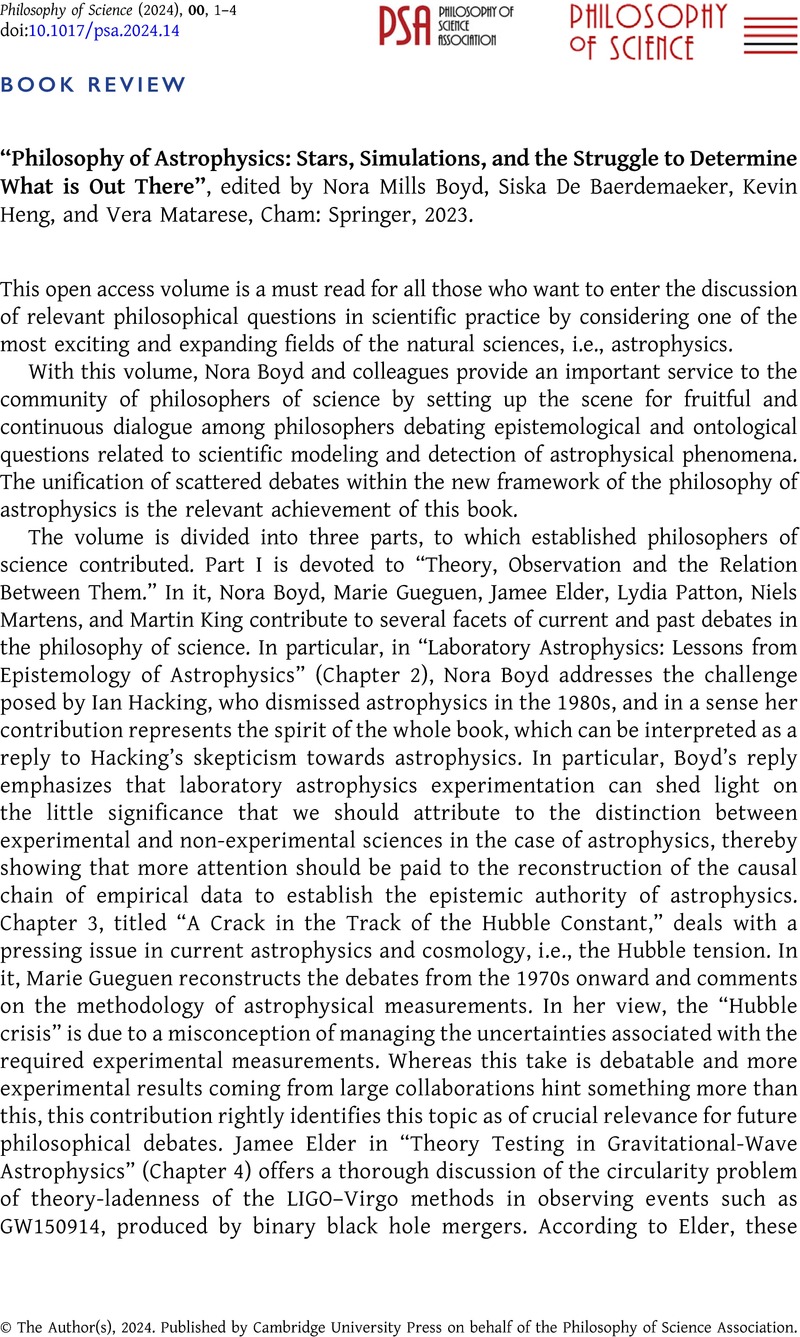No CrossRef data available.
Article contents
Review of Boyd et al.’s Philosophy of Astrophysics: Stars, Simulations, and the Struggle to Determine What is Out There - “Philosophy of Astrophysics: Stars, Simulations, and the Struggle to Determine What is Out There”, edited by Nora Mills Boyd, Siska De Baerdemaeker , Kevin Heng, and Vera Matarese , Cham: Springer, 2023.
Review products
“Philosophy of Astrophysics: Stars, Simulations, and the Struggle to Determine What is Out There”, edited by Nora Mills Boyd, Siska De Baerdemaeker , Kevin Heng, and Vera Matarese , Cham: Springer, 2023.
Published online by Cambridge University Press: 13 May 2024
Abstract
An abstract is not available for this content so a preview has been provided. Please use the Get access link above for information on how to access this content.

Information
- Type
- Book Review
- Information
- Copyright
- © The Author(s), 2024. Published by Cambridge University Press on behalf of the Philosophy of Science Association

